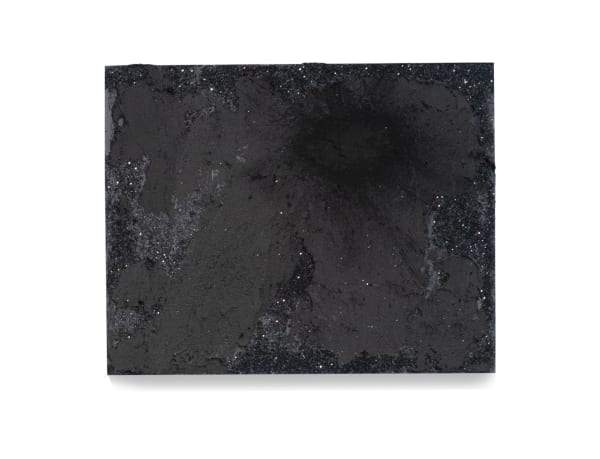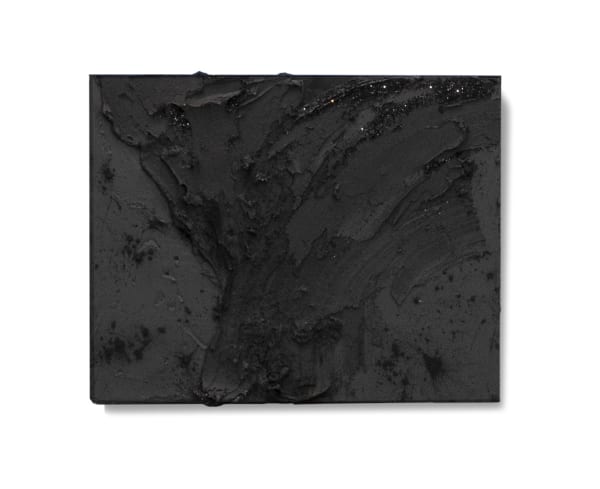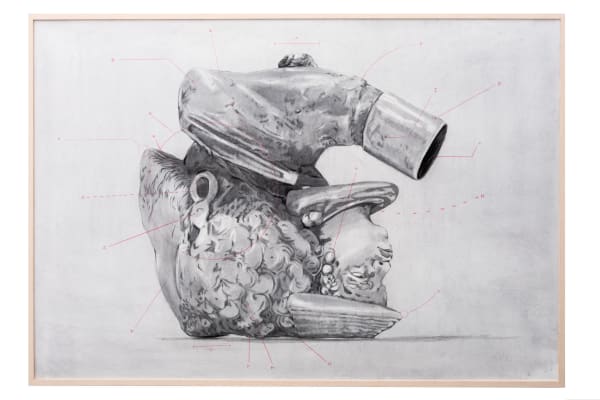-
The Sea Urchin Can't Swim: Tales from the Edge of a World
Cosmo Whyte -
Johnson Lowe Gallery is pleased to present our inaugural solo exhibition of Cosmo Whyte. Opening on October 4th, with a reception from 6-9 pm, and coinciding with the Atlanta Art Fair and Atlanta Art Week, Cosmo Whyte's The Sea Urchin Can't Swim: Tales from the Edge of a World, marks his first presentations with the gallery.
In The Sea Urchin Can't Swim: Tales from the Edge of a World, Los Angeles based artist Cosmo Whyte continues his explorations of race, nationalism, and displacement in what ostensibly culminates in a presentation of land and seascapes. Drawing from his archives of personal migration, Caribbean folklore, and historical photographs related to water practices spanning from the 1930’s to the present, Through a diverse array of media, encompassing drawings, photography, sculpture, and installation, Whyte articulates the dialectical tensions between the foreign and the domestic, mirroring the liminal spaces of migration and the perpetual evolution of identity formation. -

-
Encompassing the entire span of a wall in the central gallery, a photo-based installation depicts a faintly featured, near-silhouetted Black figure swimming beneath the crossbeams of a glass-bottom boat, a tourist attraction first introduced in the Caribbean during the 1900s for observing marine life, coral reefs, and shipwrecks. What is at play in this eerily ambiguous, yet heroic photograph is Whyte’s careful consideration of perspective as a means of situating the viewer—not just as a voyeur, but as an active participant in the dynamics at work within the installation. To stand before the piece is to embody the very Western gaze Whyte has long interrogated, while simultaneously basking in the agency imparted by the figure’s unyielding presence.
-
In Cosmo's Permutations Series: Permutations 1: Terra Incognita, figures blur and dissolve, reflecting the fluidity of cultural identity within contested spaces like Caribean Carnival. Like Gilroy’s notion of “politics on a lower frequency,” Whyte’s imagery suggests that beneath the surface, there is an undercurrent of quiet resistance—a persistent assertion of identity that resists simplification. The layering of photographs and drawings becomes an act of safeguarding both memory and the diasporic body, challenging viewers to navigate the tension between visibility and concealment. Each line, photograph, and obscured detail reflects the constant negotiation of identities across time and space, where histories are both fluid and deeply rooted.
-
Cosmo Whyte’s Permutations marks a pivotal moment in his practice, as he integrates photographs into his large-scale charcoal drawings for the first time, layering elements that explore the fragile boundaries of identity and history. In Permutations 2: Saturated Soil, the juxtaposition of meticulously drawn figures and photographic fragments reveals the tension between containment and inevitability—sandbags and tarps symbolize attempts to hold back the forces of migration and displacement.
-
-
Flags of Convenience
In Flags of Convenience, Cosmo Whyte examines the layered issues of sovereignty, access, and the lingering legacies of colonialism that permeate the Caribbean. Composed of draped, overlapping images suspended from steel bars and hooks, the piece is a vivid meditation on the controversial maritime practice of “flags of convenience” (FOC). The images drawn from archival photographs of Caribbean water practices, juxtaposing the beauty and resilience of Caribbean life against the exploitative mechanisms of global maritime commerce. The FOC concept—a practice where ships fly the flags of nations other than their own, sidestepping regulations, labor laws, and national accountability—serves as a metaphor for the fractured identities imposed upon former colonies.Here, Whyte exposes the FOC as more than a legal loophole; it is a tool of neocolonial power that permits the circumvention of sovereignty, reducing nations to convenient facades for the profit of foreign entities. By assembling these images within a fragmented, almost spectral arrangement, Whyte captures the tension between national identity and global exploitation. -
Cosmo Whyte’s annotated schematics of Meerschaum pipes in Codex and Conjoined Meerschaum with encrypted annotations (2024) are drawn with precise charcoal strokes punctuated by blood-red lines and cryptic lettering, manifest as a complex merging of archival folklore with a historical examination of maritime conquest. These traditionally white clay pipes were first produced in England during the late 16th century after the introduction of tobacco from the American colonies and Caribbean Islands. The figure, rendered as an inverted male bust with full, natural hair cascading in rich waves denies immediate recognition. This inversion is deliberate; it subverts the viewers expectation, creating a disorienting effect that unsettles the familiar. By positioning the head upside down, Whyte interweaves the identity of the pipe—a symbol of colonial leisure—with the semblance of a human form, thus blurring the boundary between object and subject, artifact and identity. This unexpected twist reclaims the pipe from its passive, decorative role, reassigning it a voice that speaks to the buried histories of individuals rendered silent by imperial narratives.
-

-

-

The Sea Urchin Can't Swim: Tales from the Edge of the World: Cosmo Whyte
Past viewing_room









